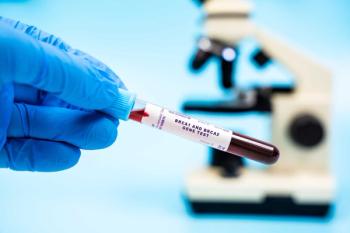
Laparoscopy Shown to Be Cost-effective in Evaluating Newly Diagnosed Ovarian Cancer
Researchers from MD Anderson Cancer Center found that laparoscopy cost more upfront but eliminated wasteful treatment decisions.
A cost-effective analysis has shown that using laparoscopy to guide the initial treatment plan for patients with newly diagnosed ovarian cancer is cost-effective for health care payers. Results were published in the journal Gynecologic Oncology.
The analysis was designed to show whether using laparoscopy would be useful in deciding between 2 surgical approaches: the more aggressive primary cytoreduction (PCS) and the less invasive neoadjuvant chemotherapy with interval cytoreduction (NACT), based on the likelihood of complete gross resection.
Researchers from the University of Texas MD Anderson Cancer Center used a microsimulation model that included the elements of a more conventional decision making process to compare with laparoscopy. The model included diagnostic work-ups, surgical and adjuvant treatment, complications, and progression-free survival (PFS), with parameters developed based on published literature and investigators’ own data.
Effectiveness was measured in quality-adjusted PFS years and tested with a probabilistic sensitivity analysis (PSA). A willingness-to-pay level was set at $50,000 year per year for each year of quality adjusted PFS.
The laparoscopy cost more upfront but was also more effective in guiding treatment. The average additional cost of $7034 led to an average additional 4.1 months of quality-adjusted PFS. The incremental cost-effectiveness ratio of the procedure was $20,376 per year of PFS, well below the threshold. Using the procedure ahead of treatment decisions helped avoid other serious complications and added costs, and researchers reported that laparoscopy was “cost-effective across a range of willingness-to-pay thresholds.”
The authors concluded, “Performing laparoscopy is a cost-effective way to improve primary treatment planning for patients with untreated advanced ovarian cancer.”
Reference
Harrison RF, Cantor SB, Sun CC, et al. Cost-effectiveness of laparoscopic disease assessment in patients with newly diagnosed advanced ovarian cancer. Gynecol Oncol. Published online January 31, 2021. doi: 10.1016/j.ygyno.2021.01.024.
Newsletter
Stay ahead of policy, cost, and value—subscribe to AJMC for expert insights at the intersection of clinical care and health economics.





























































